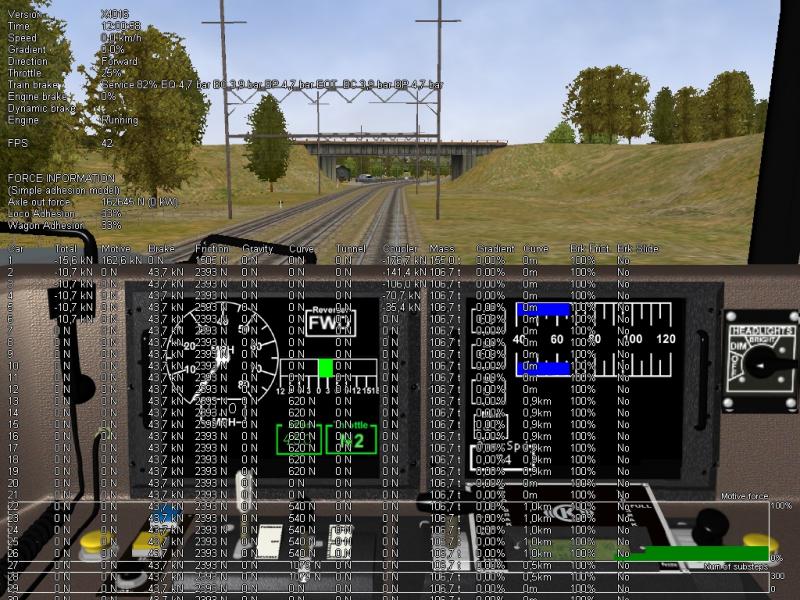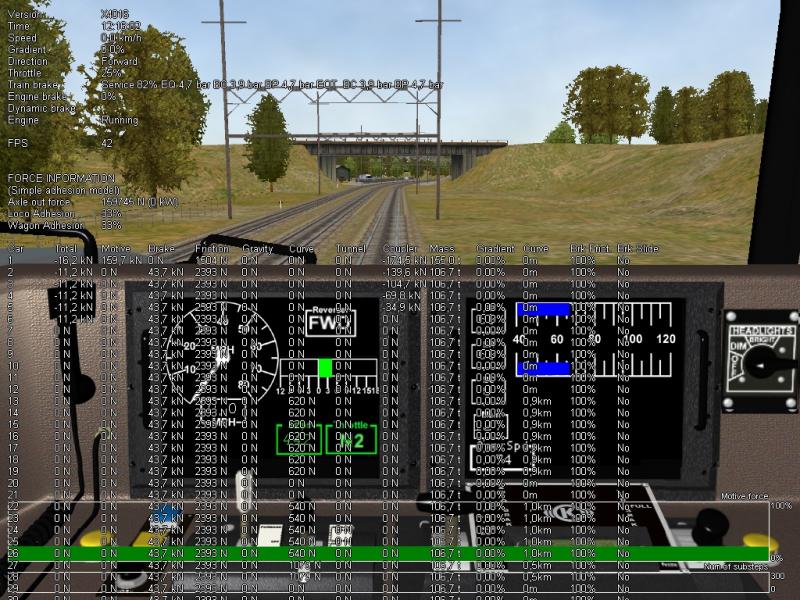In OR occurs permanent drop in tractive force, when it should not reduce.
https://youtu.be/bT7j5fUjORI
Locomotive in video download here:https://skura.msts.cz/109e/cd_380.zip
cabview:http://msts.web2001.cz/download/cab380.zip
sound:http://modely-msts.cz/zvuky/snd38X.exe
 TRAINSET.ZIP (11.54K)
TRAINSET.ZIP (11.54K)
Number of downloads: 298
My eng with real traction charakteristic and cvf for this locomotive. Traction characteristic is from this website. Traction force should not reduce at a speed range of 0 to 100kmh, if the throttle does not change.
Same issue without traction characteristics.
https://youtu.be/7Ze7siYfevw
in time 12:02:24 change advanced model adhesion. Same issue as simple model adhesion.
in time 12:02:55 decrease in tractive force from 81.3kN to 81.2kN
in time 12:03:08 added power, tractive force 162.5kN
in time 12:03:14 decrease in tractive force from 162.5kN 162.4kN
in time 12:03:39 decrease in tractive force from 162.4kN 162.3kN
in time 12:04:05 decrease in tractive force from 162.3kN 162.2kN
Please repair
Thanks.
 OpenRailsLog.txt (17.13K)
OpenRailsLog.txt (17.13K)
Number of downloads: 240

 Log In
Log In Register Now!
Register Now! Help
Help






